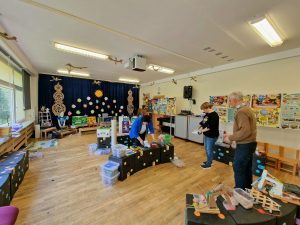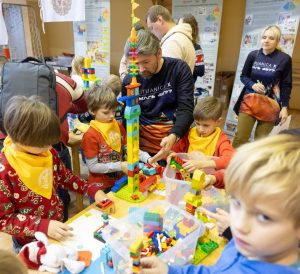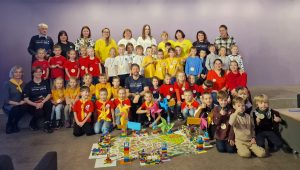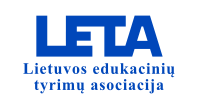Topicalities 2024
STEAM Approach in Early Childhood Education
Associate Professor Dr. Sergejus Neifachas
In the age of rapid technological development and in the knowledge society, children’s knowledge creation and application skills are gaining more and more importance in the practice of early childhood education, and creativity and innovation are becoming a key characteristic of advanced preschool schools. Preschool and pre-primary children are attracted to experiential learning environments, focusing on contexts of play and discovery, exploration and deep learning, and fostering critical thinking skills.
Particular emphasis is placed on creating a more innovative educational and self-directed learning environment. One such environment is the STEAM environment. It is an innovative education where all areas of learning are closely interlinked. Therefore, it can be argued that the STEAM approach to education is a complex phenomenon, encompassing the development of all generic competences.
The STEAM approach empowers children to express themselves through movement, construction, engineering, science experiments, discovery, liberated logical thinking, and the ability to justify knowledge using modern educational tools or instruments. It is an event of creative success in children’s everyday education: children choose the activities that best suit their abilities, needs and interests; they are encouraged to deepen their knowledge through non-formal learning activities: experimenting, exploring, analysing, creating, understanding and discovering. STEAM education gives children a sense of joy, a desire to learn and to engage in learning activities.
STEAM education in the early childhood sector is designed on the principles of integrity and systematicity, responding to the need to develop children’s creativity and initiative as early as pre-school, and to stimulate their interest in the latest STEAM innovations. The curriculum areas and content reflect the advances in modern technology and are in line with priorities such as a sustainable and balanced environment, an inclusive and creative society. Science education is about observation, exploration, prediction, thinking about how things happen, understanding what is happening, what we see, scientific interpretation, evaluation and drawing conclusions. In pre-school, children are able to construct their own knowledge and reason about science through action and discovery.
In technological sciences, education focuses on ingenuity, problem recognition, initiative, knowing how to choose materials and tools to make work easier, playing with construction machines, and using ICT. Children’s engineering involves the creation and improvement of a variety of specific structures. It is important that engineering activities encourage cooperation with each other and helping each other. When children solve an engineering problem, they observe, think, make predictions, suggest possible solutions to the problem, learn from failures, interact with adults and peers. In this way, children learn to focus, persevere, take risks, and tolerate disappointment. Engineering can thus be described as goal anticipation, logical thinking, systematic problem solving. Mathematics education is about counting, measuring, classifying, comparing, using mathematical concepts in storytelling, collecting, recording and illustrating mathematical information with visual aids, creative mathematical problem solving, and recognising figures in the plane and space. Art in STEAM is one of the exploratory activities that can activate children’s creativity. It is an integral part of the learning process. Art aims to teach children to experiment with their imagination.
The STEAM approach to education is not a single discipline, but rather a series of strategies that help learners apply concepts and skills from different disciplines to solve meaningful problems. Science, technology, engineering, art and mathematics are distinct fields that become linked in an integrative way in STEAM education.
By integrating STEAM into children’s education, educators encourage children to ask questions about what is going on in their immediate environment, to actively observe their surroundings, and to explore by constructing, designing, measuring, creating and thus developing the necessary skills. At the same time, children communicate, listen, share ideas and analyse. This is how children learn through play. Play is perceived as one of the most effective methods for teaching children engineering, science, mathematics, social and emotional skills.






